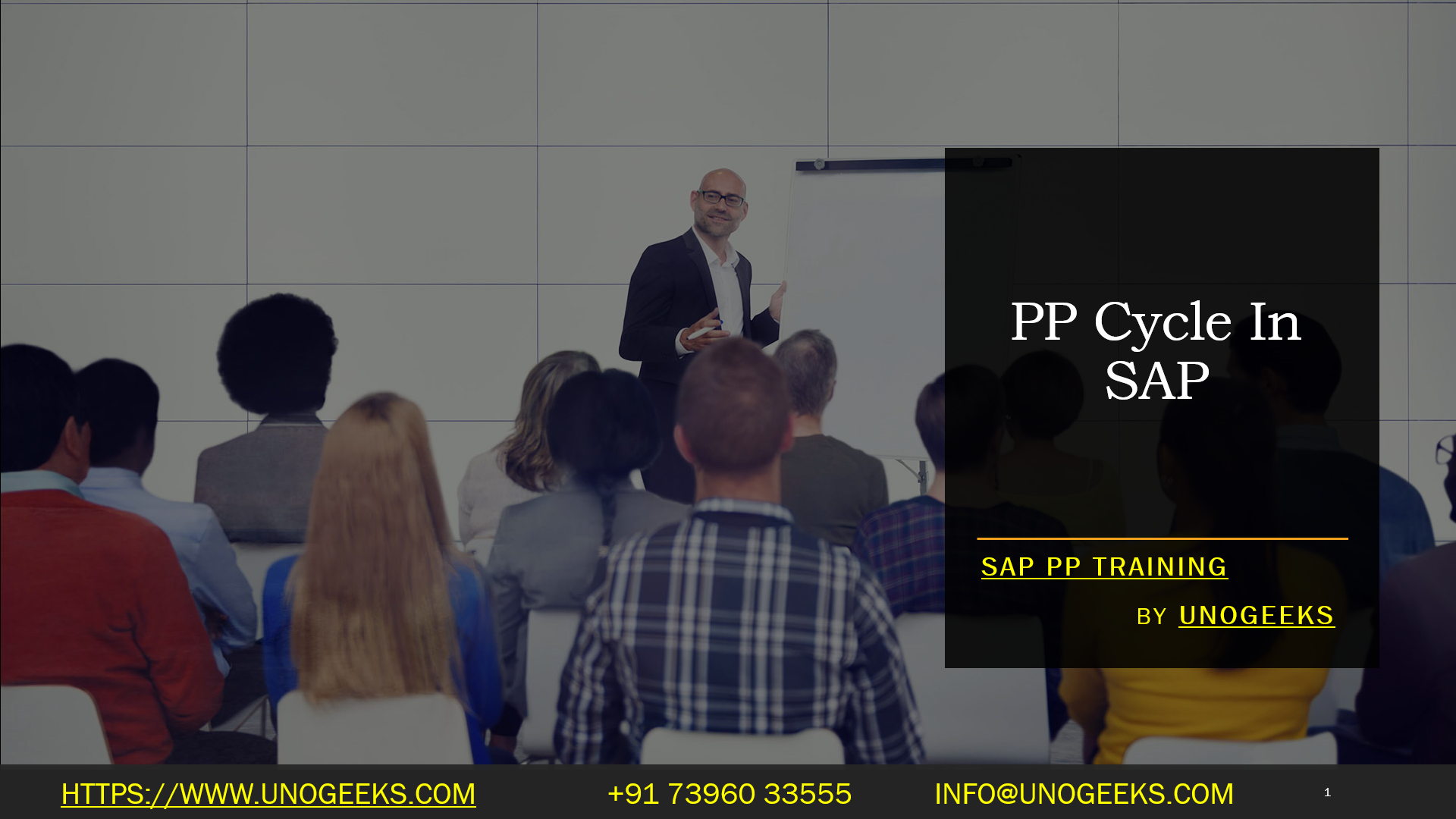PP Cycle In SAP
Understanding the SAP PP Cycle: A Key to Efficient Manufacturing
SAP PP (Production Planning) is an essential module within the SAP ERP (Enterprise Resource Planning) suite. It empowers businesses to streamline their manufacturing processes, optimizing resource utilization and ensuring on-time product delivery. In this blog, we’ll dive into the PP cycle in SAP, exploring its key phases and how it aids in efficient production.
What is the PP Cycle?
The PP cycle refers to the systematic sequence of steps involved in planning, executing, and controlling manufacturing activities within the SAP system. It serves as a blueprint to align demand with production capacity, ensuring the timely and cost-effective creation of goods.
Key Phases of the SAP PP Cycle
- Demand Management:
- The cycle begins with understanding customer demand through sales forecasts, existing sales orders, and market trends.
- Demand management helps determine the type and quantity of products to be manufactured.
- Material Requirements Planning (MRP):
- MRP is the engine of the PP cycle. It takes demand information and analyzes the Bill of Materials (BOM) for each product to calculate the required quantities of raw materials and components.
- MRP also generates planned orders or purchase requisitions to ensure the availability of materials on time.
- Capacity Planning:
- This phase involves evaluating the available production capacity, including machinery, labor, and time.
- Capacity planning helps determine if the existing resources are sufficient to fulfill the production requirements generated through MRP.
- Production Orders:
- Production orders serve as the formal instructions to the manufacturing floor. They contain:
- Material to be produced
- Plant where production takes place
- Production dates and times
- Required quantities
- Routing (the sequence of operations)
- Production Execution:
- This is where the planned production is carried out on the shop floor. Key activities include:
- Issuing raw materials to production
- Recording labor time
- Confirmations of production steps
- Goods receipt of finished products into the warehouse
- Goods Movements:
- SAP PP tracks various goods movements throughout the cycle:
- Raw materials issued for production
- Semi-finished goods moving between stages
- Finished goods received into inventory
- Costing and Settlement:
- SAP PP calculates the actual costs incurred during production, including:
- Material costs
- Labor costs
- Overhead costs
- It enables the analysis of variances between planned and actual costs.
- Production-related costs are then settled to cost objects (like products or cost centers).
Benefits of Using SAP PP
- Improved Production Planning: SAP PP enables accurate and timely production planning, minimizing delays and stockouts.
- Optimized Resource Utilization: Helps businesses maximize the use of machines, labor, and materials.
- Enhanced Material Management: Ensures the right materials are available at the right time, streamlining the procurement process.
- Accurate Costing: Provides precise calculation of production costs, supporting better pricing decisions.
- Supply Chain Visibility: Offers real-time insights into production status, enabling informed decision-making across the supply chain.
Conclusion
The SAP PP cycle is a powerful tool that enables businesses to orchestrate their manufacturing operations with precision. By understanding and effectively implementing the PP cycle, organizations can achieve greater production efficiency, improved cost control, and increased customer satisfaction.
Conclusion:
Unogeeks is the No.1 IT Training Institute for SAP PP Training. Anyone Disagree? Please drop in a comment
You can check out our other latest blogs on SAP PP here – SAP PP Blogs
You can check out our Best In Class SAP PP Details here – SAP PP Training
Follow & Connect with us:
———————————-
For Training inquiries:
Call/Whatsapp: +91 73960 33555
Mail us at: info@unogeeks.com
Our Website ➜ https://unogeeks.com
Follow us:
Instagram: https://www.instagram.com/unogeeks
Facebook:https://www.facebook.com/UnogeeksSoftwareTrainingInstitute
Twitter: https://twitter.com/unogeek
